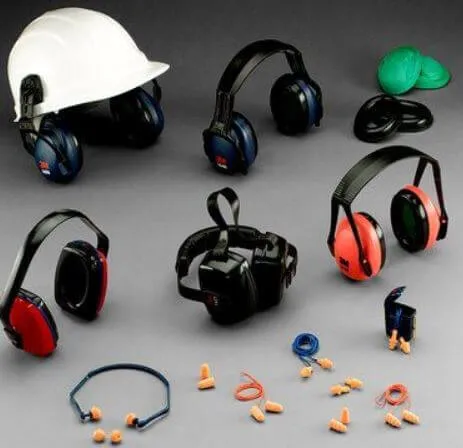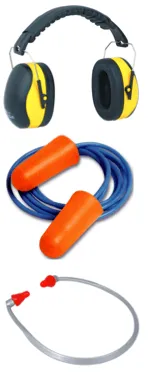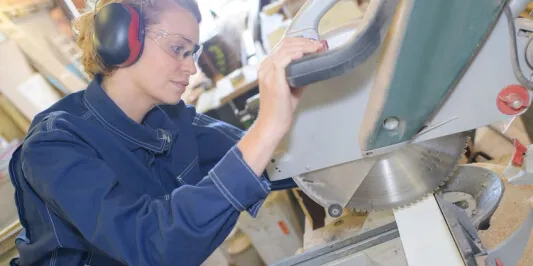Examples of hearing protection devices include ear plugs or ear muffs. Hearing loss is often ignored because it can happen gradually over a period of time. The use of personal listening devices, such as ear buds or headphones, cannot take the place of hearing protection.
Some examples of equipment at UVM that may require hearing protection are sonicators, cage washers, and powered groundskeeping equipment. A risk assessment should be conducted before appropriate hearing protection is chosen.
Hearing protection devices receive a Noise Reduction Rating (NRR). This is the measurement, in decibels, of how well a hearing protector reduces noise as specified by the EPA.The higher the NRR number, the greater the noise reduction. While wearing hearing protection, your exposure to noise is equal to the total noise level minus the NRR of the hearing protectors in use. OSHA and NIOSH have developed different methods of "derating" the NRR based upon the type of hearing protection being used, as well as the type of noise it is used for.
Permissible Exposure Limits (PEL)
The limits for permissible noise exposure, according to OSHA standards, are shown in the table below. Short-term noise exposure should be limited to a level not greater than 115 dBA. Occupational Health and Safety is available to monitor noise levels, as requested.
PELs for Noise According to OSHA:
| Duration | dB |
|---|---|
| 8 hours | 90 dB |
| 6 hours | 92 dB |
| 4 hours | 95 dB |
| 3 hours | 97 dB |
| 2 hours | 100 dB |
| 1.5 hours | 102 dB |
| 1 hour | 105 dB |
| 30 min | 110 dB |
| 15 min | 115 dB |
Noise
In shops, exposure levels of noise should be assessed and monitored. Arrangements can be made with the Department of Risk Management and Safety to do an initial assessment, an annual survey, and a repeat assessment whenever new equipment that generates noise is installed or added to a shop area.
The Levels of Noise table below serves as a quick guide to permissible noise exposure levels. This helpful chart shows exposure levels of common equipment and activities. The OSHA table for permissible noise exposures is also shown below. Protection against the effects of noise exposures must be provided when the sound levels exceed the levels shown in the chart.
| Sound Level | Action to take | Noise | dB |
|---|---|---|---|
| Painful and Dangerous | Use hearing protection or avoid | Fireworks | 140 |
| Gun shots | 140 | ||
| Custom stereos (at full volume) | 140 | ||
| Jackhammers | 130 | ||
| Ambulances | 130 | ||
| Uncomfortable | Dangerous over 30 seconds | Jet planes (during take off) | 120 |
| Very Loud | Dangerous over 30 minutes | Concerts (any genre of music) | 110 |
| Car homes | 110 | ||
| Sporting events | 110 | ||
| Snowmobiles | 100 | ||
| MP3 players (at full volumn) | 100 | ||
| Lawnmowers | 90 | ||
| Power tools | 90 | ||
| Blenders | 90 | ||
| Hair Dryers | 90 | ||
| Loud | None | Alarm clocks | 80 |
| Traffic | 70 | ||
| Vacuums | 70 | ||
| Moderate | None | Normal conversation | 60 |
| Dishwashers | 60 | ||
| Moderate rainfall | 50 | ||
| Soft | None | Quiet library | 40 |
| Whisper | 30 | ||
| Faint | None | Leaves rustling | 20 |
Duration per day, hours | Sound level dBA slow response |
|---|---|
| 8 | 90 |
| 6 | 92 |
| 4 | 95 |
| 3 | 97 |
| 2 | 100 |
| 1 1/2 | 102 |
| 1 | 105 |
| 1/2 | 110 |
| 1/4 or less | 115 |


